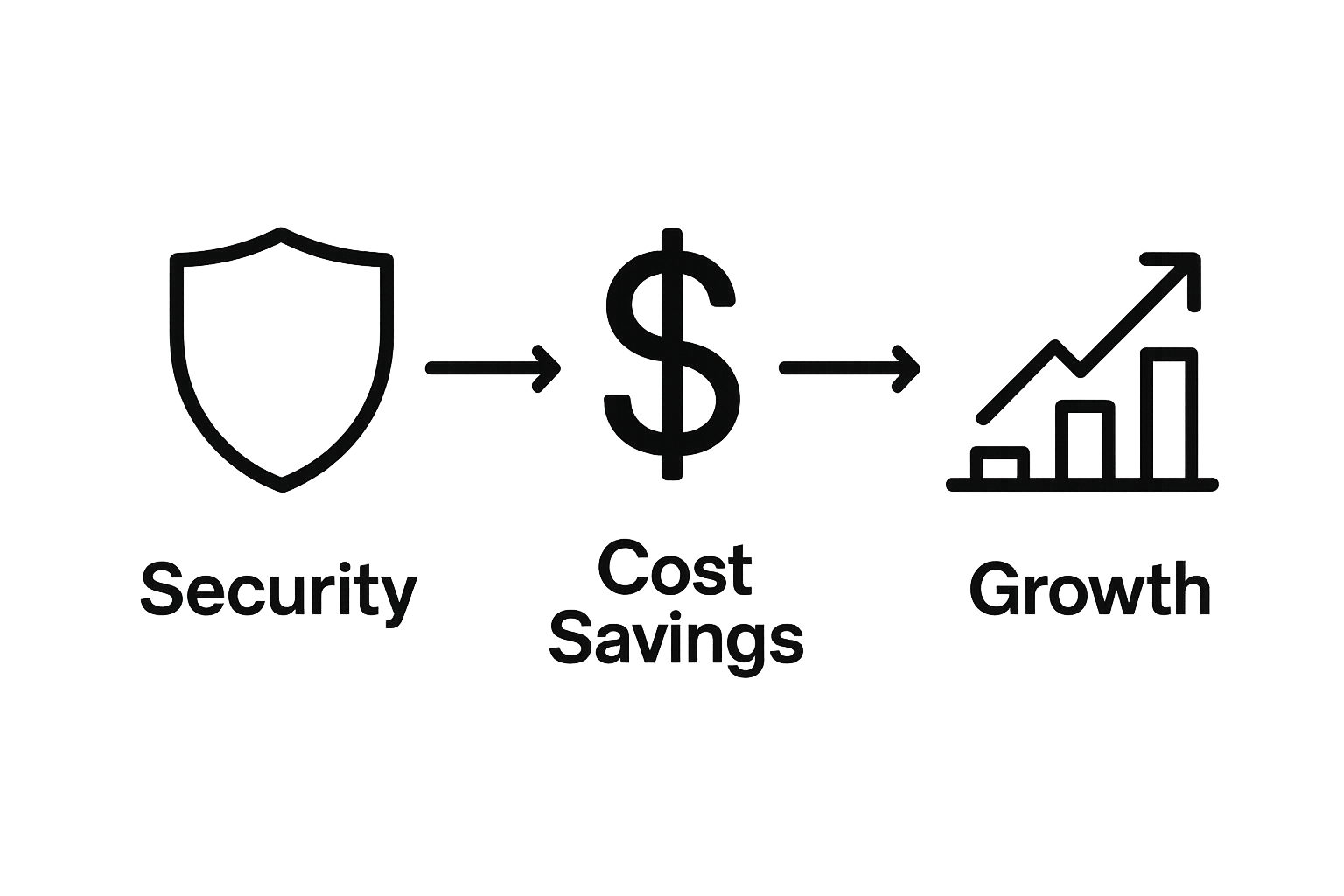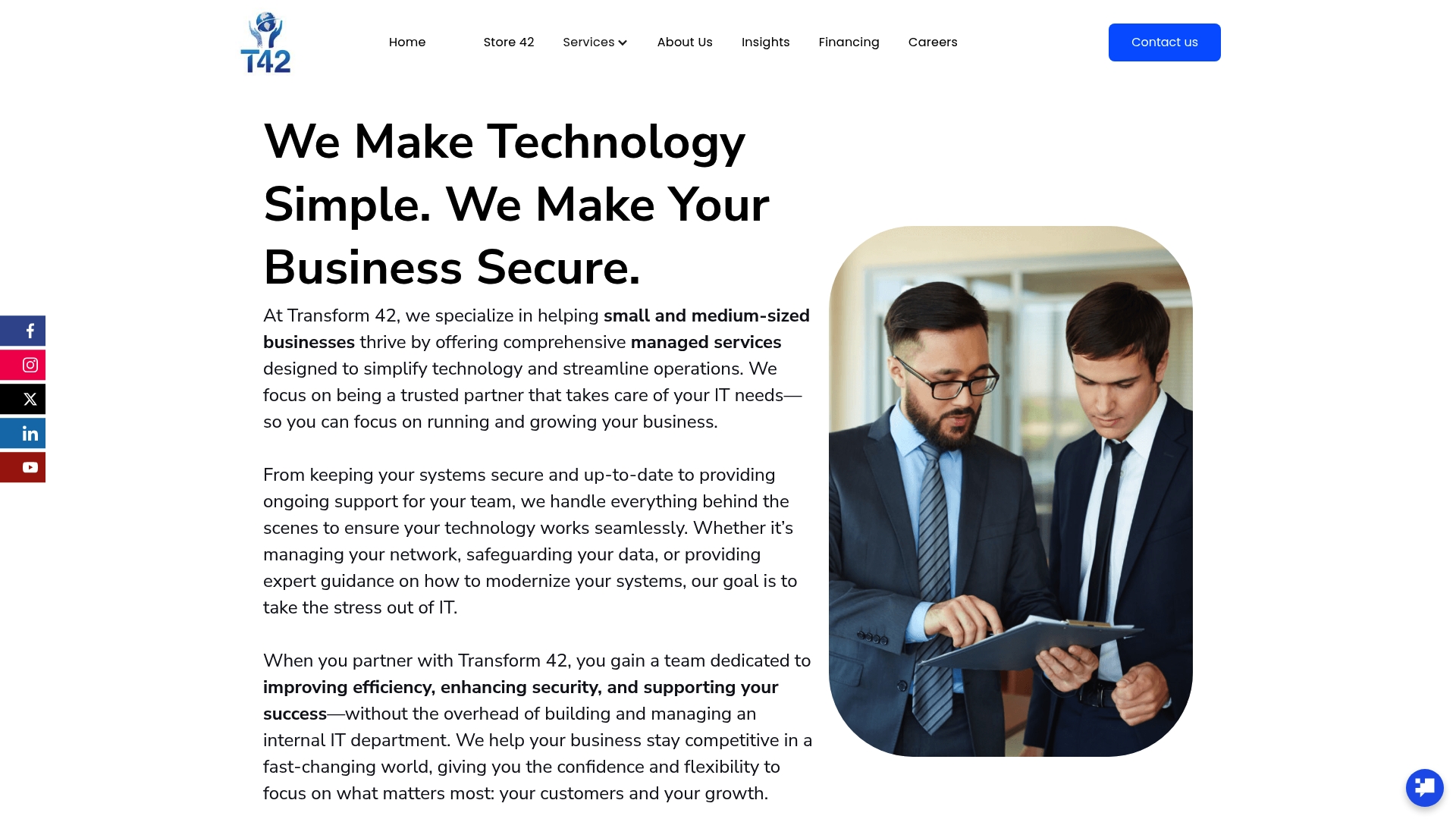
Managed services are changing the way businesses handle technology and daily operations. Outsourcing IT might sound risky at first but businesses that use managed services have reported cost reductions and better security, with 60 percent experiencing fewer outages. Most people assume hiring an outside company to run tech means less control and more chaos. In reality, the biggest surprise is how much freedom it gives managers to focus on real growth while experts quietly handle the tech headaches in the background.
TakeawayExplanationOutsource IT roles to Managed Services ProvidersPartnering with MSPs allows businesses to focus on core functions while experts handle technology.Access enterprise-level tech without high costsManaged services provide SMBs with advanced solutions without the need for substantial upfront capital investments.Ensure consistent cybersecurity measuresContinuous monitoring and assessment from MSPs help protect businesses against evolving cyber threats effectively.Transform operational costs into predictable expensesMonthly pricing models simplify budgeting and reduce unexpected financial burdens associated with technology maintenance.Enhance scalability and adaptabilityManaged services support business growth by providing scalable technology solutions that align with changing needs.
Managed services represent a strategic approach where businesses outsource specific technology and operational responsibilities to specialized external providers. These providers, known as Managed Services Providers (MSPs), take comprehensive responsibility for monitoring, maintaining, and managing critical business functions, allowing organizations to focus on core strategic objectives.
At its fundamental level, managed services encompass a proactive method of handling technology infrastructure and business processes. Rather than maintaining an in-house team for every technical requirement, businesses leverage external experts who bring specialized knowledge and advanced technological capabilities.
Key characteristics of managed services include:
For small and medium-sized businesses, managed services provide a critical pathway to accessing enterprise-level technological capabilities without substantial upfront investments. According to the Cybersecurity and Infrastructure Security Agency, these services help organizations develop more resilient operational frameworks.
Businesses utilizing managed services can expect significant advantages such as reduced operational costs, enhanced security protocols, improved technological efficiency, and the ability to redirect internal resources toward strategic business development. By partnering with a skilled Managed Services Provider, organizations transform complex technological challenges into streamlined, manageable processes that support sustainable growth and competitive advantage.
The following table outlines the core components of managed services, summarizing their main features and the value they offer to small and medium-sized businesses.
ComponentDescriptionValue to SMBsContinuous Monitoring & MaintenanceOngoing oversight of IT systems to prevent issuesReduces downtime and ensures system stabilityPredictable Monthly PricingFixed, recurring costs for IT servicesSimplifies budgeting and expense planningRapid Issue ResponseSwift action on technical problemsMinimizes business disruptionsScalable SolutionsEasily adapts to evolving business needsSupports business growth and agilityAccess to Expert KnowledgeSpecialized technological expertise from providersBrings advanced solutions without hiring staff
In an increasingly complex technological environment, small and medium-sized businesses face significant challenges in maintaining robust, secure, and efficient IT infrastructure. Managed services have emerged as a critical solution, enabling organizations to navigate technological complexities while maintaining competitive advantages.
Modern businesses recognize technology not just as a support function, but as a fundamental driver of growth and innovation. For SMBs with limited internal resources, managed services provide a strategic pathway to accessing advanced technological capabilities without substantial capital investments.
Key technological considerations for SMBs include:
Cloud-based managed services represent a revolutionary approach for SMBs seeking operational flexibility. According to research published in Emerald Insight, cloud computing enables businesses to organize and exchange critical data in real time, allowing faster responses to changing market demands.
By leveraging managed services, SMBs can transform potential technological challenges into strategic opportunities. These services provide comprehensive support across critical domains such as network management, cybersecurity, data backup, and system optimization. The result is a more agile, secure, and technologically sophisticated business environment that empowers organizations to focus on their core mission and strategic growth objectives.
This table compares traditional in-house IT management with managed services, highlighting differences that impact cost, efficiency, and security for small and medium-sized businesses.
AspectIn-House IT ManagementManaged Services ModelCost StructureHigh upfront & unpredictable expensesPredictable monthly paymentsExpertiseLimited by internal staffAccess to specialized external expertsScalabilityRequires hiring & trainingEasily adjusts to business size & needsSecurity ManagementOften reactiveProactive, ongoing threat monitoringFocus AllocationStaff divided between IT & core tasksInternal focus shifts to core business goals
Managed services represent a transformative approach for small and medium-sized businesses seeking to optimize their technological capabilities and strategic potential. By outsourcing complex technological responsibilities, organizations can unlock significant operational advantages that drive sustainable business growth.
Efficiency stands as a cornerstone benefit of managed services. Organizations can redirect internal resources from routine technological maintenance toward core business objectives. This strategic reallocation allows businesses to concentrate on innovation, customer engagement, and revenue generation.
Key efficiency advantages include:
In an era of increasing cybersecurity threats, managed services provide robust protection mechanisms. Managed IT services offer advanced security tools that continuously monitor, assess, and respond to potential vulnerabilities, ensuring businesses remain protected against evolving digital risks.
Businesses can also explore our comprehensive guide on business agility in defense contracting to understand how technological resilience supports strategic adaptability. By implementing proactive security protocols, organizations can safeguard critical data, maintain regulatory compliance, and build trust with stakeholders. The result is a more secure, responsive technological infrastructure that supports long-term business sustainability and growth.

Managed services offer small and medium-sized businesses a strategic approach to transforming technological expenses from unpredictable capital investments into consistent, manageable operational costs. By reimagining resource allocation, organizations can achieve significant financial optimization and technological efficiency.
Traditional technology management requires substantial upfront investments and ongoing maintenance expenses. Managed services fundamentally change this model by providing predictable monthly pricing structures that enable businesses to forecast and control technological expenditures more accurately.
Key financial advantages include:
According to research on organizational cost management, effective resource identification and strategic planning are crucial for maintaining technological competitiveness. Managed services enable businesses to redirect internal talent from routine maintenance toward high-value strategic initiatives.
By outsourcing complex technological responsibilities, organizations can focus on core business objectives, accelerate innovation, and create more meaningful value. The result is a leaner, more agile operational model that maximizes both financial resources and human potential, driving sustainable growth and competitive advantage.

Real-world success stories demonstrate the transformative potential of managed services for small and medium-sized businesses. These practical examples highlight how strategic technological partnerships can drive operational excellence, enhance resilience, and create sustainable competitive advantages.
Businesses across various industries have discovered that managed services provide more than technological support they represent a comprehensive strategy for growth and adaptation. By leveraging external expertise, organizations can navigate complex technological landscapes while maintaining focus on their core business objectives.
Key characteristics of successful managed service implementations include:
According to the U.S. Small Business Administration, organizations that embraced managed services during the COVID-19 pandemic demonstrated remarkable resilience. These businesses quickly transitioned to remote work environments, maintained robust cybersecurity protocols, and continued delivering critical services despite unprecedented challenges.
By partnering with managed service providers, SMBs transformed potential technological obstacles into strategic opportunities. This approach enabled businesses to preserve operational continuity, protect critical data infrastructure, and position themselves for accelerated growth in rapidly changing market conditions. The result is a more agile, technologically sophisticated business ecosystem that can respond effectively to emerging challenges and opportunities.
Does worrying about unpredictable IT costs, cybersecurity threats, or constant tech interruptions keep you from growing your business? The article highlights how small and medium-sized businesses struggle with shifting technology demands, data protection, and the pressure to do more with less. Managed services transform these pain points into real opportunities for agility, security, and streamlined operations. Imagine having proactive monitoring, predictable expenses, and advanced support that let you keep your eyes on your mission and customers.

Let Transform 42 help you overcome these technology challenges so you can drive your business forward. Discover how our fully managed IT solutions cover everything from network management to data security and ongoing support. Take the first step now by visiting our solutions for small and medium-sized businesses. If you want to learn more about building business agility in today’s market, explore our business agility in defense contracting guide. Make technology work for you today by heading to Transform 42 and turning your IT headaches into growth opportunities.
Managed services involve outsourcing specific technology and operational responsibilities to specialized providers, known as Managed Services Providers (MSPs), which allows SMBs to focus on their core business objectives while gaining access to advanced technological support.
Managed services streamline operations by reducing the need for in-house teams to handle every technical requirement. This allows businesses to reallocate internal resources towards strategic initiatives, fostering innovation and improving customer engagement.
Managed services provide predictable monthly pricing models, converting capital expenses into operational costs. This helps SMBs avoid unexpected repair costs, manage budgets more accurately, and allocate financial resources more effectively.
As cybersecurity threats increase, managed services equip SMBs with advanced security tools that continuously monitor and mitigate risks, safeguarding critical data, ensuring regulatory compliance, and maintaining customer trust.